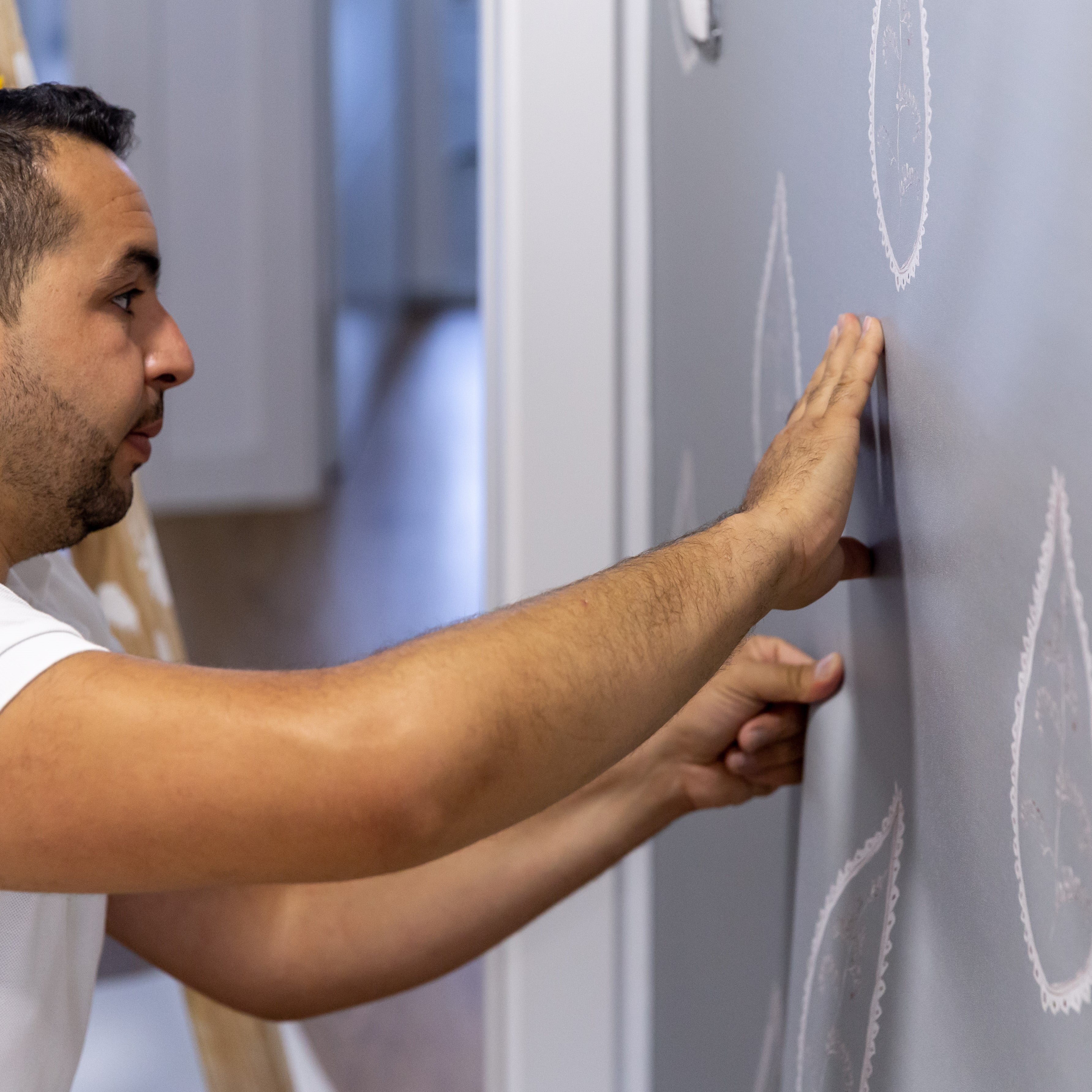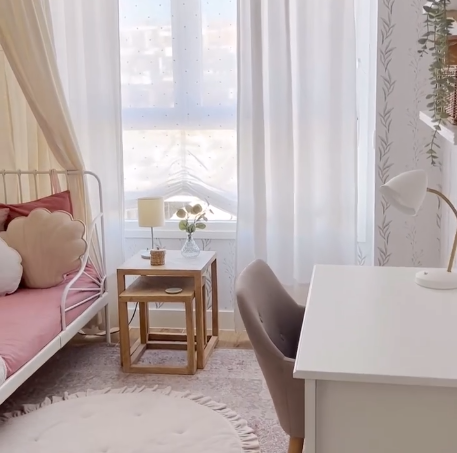
HOW TO AVOID WRINKLES WHEN HANGING WALLPAPER?
The placement of wallpaper is one of the fundamental parts of the installation process. Once it has been cut to the appropriate size, the pattern, if there is one, should be aligned, and it must be ensured that it is completely smooth, without bubbles or folds. If, despite this, irregularities appear, there are also ways to make them disappear.

The folds in the wallpaper distort the effect we want to achieve with the placement of this interior design element. They can create shadows with the lighting and do not allow for the enjoyment of the chosen pattern or color. Therefore, during installation, their appearance should be avoided at all costs.
All the factors that can cause wrinkles in the wallpaper
As always, it is very important that the wall is always well prepared. There should be no irregularities that could cause the appearance of the much-feared folds. That is why earlier preparation is preferable.
If you are going to install over an wallpaper, try to remove as much as possible all the parts that are clear and in poor condition. It is preferable to remove it completely as it may react with the glue and expand, causing irregularities.
Other issues you should consider are the type of wallpaper you are going to install. The thinner ones are more likely to create folds than the thicker ones. Also, if they are textile base TNT papers where it is only necessary to apply the glue on the wall, the process is much easier.
It is important to know the characteristics of the paper that you are going to install to know what its behavior will be once it is installed. Once placed on the wall, it must be spread carefully without stretching too much. Then it must be pressed towards the edges and ends so that it is completely smooth. Always from top to bottom and from left to right.
We advise you to carry out this operation calmly and with enough time. The installation of the wallpaper requires precision and the right tools. The correct application of the glue is also important to avoid the appearance of wrinkles. If applied excessively, it is quite likely that they will appear.
What to do if folds appear?
If the wall is prepared and the paper is thick enough, there shouldn't be many folds. If they still appear, it is important to act before the glue dries, as it will be impossible to make them disappear afterward. Once the strip is placed, you should carefully check the walls to see if there are any irregularities.
If a small crease appears, using a small size rubber roller should be enough to make it disappear. Gently and without pressing too hard, you can go over the area with this tool to remove the wrinkle. In many cases these are mini bubbles with elongated shapes and the air will have to be dragged to the edge of the paper.
The real problem arises when a large crease appears that practically occupies the entire size of the paper. In these cases the roller will not be enough and it will be necessary to carefully peel off the paper again to reposition it in the correct way. This operation should be done without haste since during handling it will They can cause breakage.
If too many folds have occurred when placing the paper, the best strategy is to completely remove it and place a new strip. If this happens with wallpaper with match, it can make installation very difficult as it is almost like forming a puzzle from which you are removing a piece. Even so, it is important to keep this remote possibility in mind.
Remember that putting up the wallpaper is not an especially difficult task but will require all your attention and care. Detecting the folds during the installation process will be essential to achieve the right results.
The wallpapers from Alf&Mabi are specially designed to make installation very easy. You only need to apply glue on the wall, making the process much easier. Additionally, they are made from textile materials, and handling them is much easier. We work with the highest quality materials so that you always achieve the best results.



